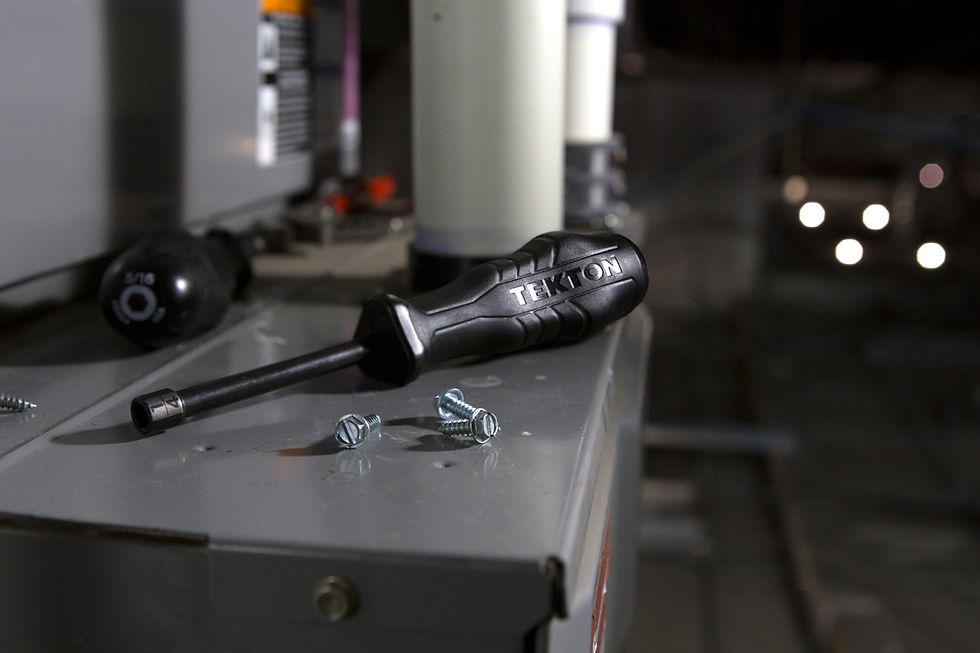Do You Really Need to Have Your Air Vents Cleaned—or Is It Just a Sham?
- ER Kent

- Jul 28
- 4 min read
What’s Gained, What’s Done, Who Benefits, and Who Doesn’t

If you've ever received a postcard in the mail or seen a $99 ad for “whole-home duct cleaning,” you may have asked yourself: is this actually necessary—or just another upsell with a vacuum? The truth is, air duct cleaning isn’t for everyone. But in the right situation, it can be a healthy, money-saving move.
Here’s a straightforward, research-backed look at what air vent cleaning is, what it does, what it costs, and whether you really need it in your home.

What Is Air Vent Cleaning?
Air duct cleaning refers to a professional service that removes dust, debris, and buildup from your home’s HVAC ductwork, including air supply and return vents, registers, coils, blowers, fans, and sometimes even grilles and drain pans. Technicians use specialized vacuums, rotating brushes, and compressed air tools to do a deep clean.
According to experts at BKV Energy, it’s meant to clear away pollutants like dust, mold, pet hair, and even rodent droppings when found.

So… Is It Worth It?
That depends. The U.S. Environmental Protection Agency has stated clearly: there’s no conclusive evidence that routine duct cleaning improves air quality or prevents health problems. In homes without visible mold, vermin, or excessive dust, cleaning air vents likely won’t make a noticeable difference.
But it’s not a scam either. There are situations where duct cleaning is absolutely worthwhile, especially when there's visible mold, pest infestation, or post-renovation debris inside your system. Southern Living and The Spruce both recommend professional cleaning every 3 to 5 years—or sooner if you notice symptoms of contamination.

What Are the Real Benefits?
When needed, duct cleaning can deliver:
Cleaner indoor air, especially for allergy or asthma sufferers
Removal of irritants like pet dander, pollen, mold spores, and dust mites
Improved system efficiency if buildup was restricting airflow
Elimination of odors from smoke, mildew, or pests
Peace of mind, particularly after a renovation or rodent issue
Filterbuy’s HVAC guide explains how clogged systems can work harder than necessary—leading to wear, noise, and higher energy bills. And NADCA (the National Air Duct Cleaners Association) confirms that cleaning can contribute to lower heating costs in some homes.

When You Probably Should Have It Done
You may benefit from a professional duct cleaning if:
You smell musty, moldy, or burnt odors when your heat or AC runs
You’ve had a recent rodent or insect infestation
There’s visible mold inside ducts or on registers
Dust coats your vents just days after cleaning
You’ve completed a major renovation that generated drywall or sawdust
You or a family member has unexplained allergy or respiratory symptoms
Experts at The Spruce note that homes with smokers, pets that shed, or elderly residents may also benefit from more regular cleaning.

When You Probably Don’t Need It
Routine duct cleaning is not necessary for homes that:
Use high-quality, regularly replaced HVAC filters
Have no signs of pests, mold, or foul odors
Don’t experience indoor allergies or asthma flare-ups
Aren’t undergoing major construction
Don’t see major airflow issues
As Better Homes & Gardens points out, air vent cleaning can actually be harmful if done improperly or too often—causing damage to sensitive components or spreading contaminants into your home.

What’s Actually Done During the Service?
A legitimate duct cleaning service should include:
Inspection of the entire HVAC system
Vacuuming with negative pressure machines to capture loosened debris
Use of brushes or air whips to scrub interior duct walls
Cleaning of supply and return vents, coils, blowers, fans, drip pans
Sealing or reattaching any disturbed duct sections
NADCA recommends only hiring certified professionals who use proper containment and source-removal methods. BKV Energy warns against companies that just blow dust around or skip over return ducts entirely.

How Much Does It Cost?
Costs vary depending on home size, number of vents, and regional rates, but here’s a general idea:
$450–$1,000 for a full home system
Around $25–$50 per vent
$0.15 to $0.40 per square foot, according to NerdWallet
Larger homes or systems with mold or debris may go well over $1,000
This Old House notes that ultra-cheap services (like those advertised for $99) often use bait-and-switch tactics or perform an incomplete job.

Are Chemicals or Sealants Safe?
Be careful here. The EPA advises against routine use of biocides or sealants unless mold or bacteria is confirmed. Many sealants simply trap particles inside rather than remove them.
Only approve chemicals if your technician explains exactly what’s being used and why.

So, Is It a Scam?
No—but it’s not always necessary. In homes with serious air quality issues, neglected ducts, or evidence of pests or mold, it’s well worth the money. But for well-maintained systems, it’s often just an unnecessary service sold by marketing-heavy companies.
The best approach? Inspect your vents. Change your filters. Know your symptoms. And when in doubt, get an honest second opinion from your trusted HVAC technician.

Bottom Line: Clean if You Need It, Skip if You Don’t
If you’ve had recent remodeling, unusual odors, or visible mold or pests, duct cleaning can make a big difference in how your home feels and functions.
But if you’re just trying to freshen the air or fight a little dust? You’re likely better off replacing filters and vacuuming vents yourself.
Breathe easy—just not expensively.








Comments